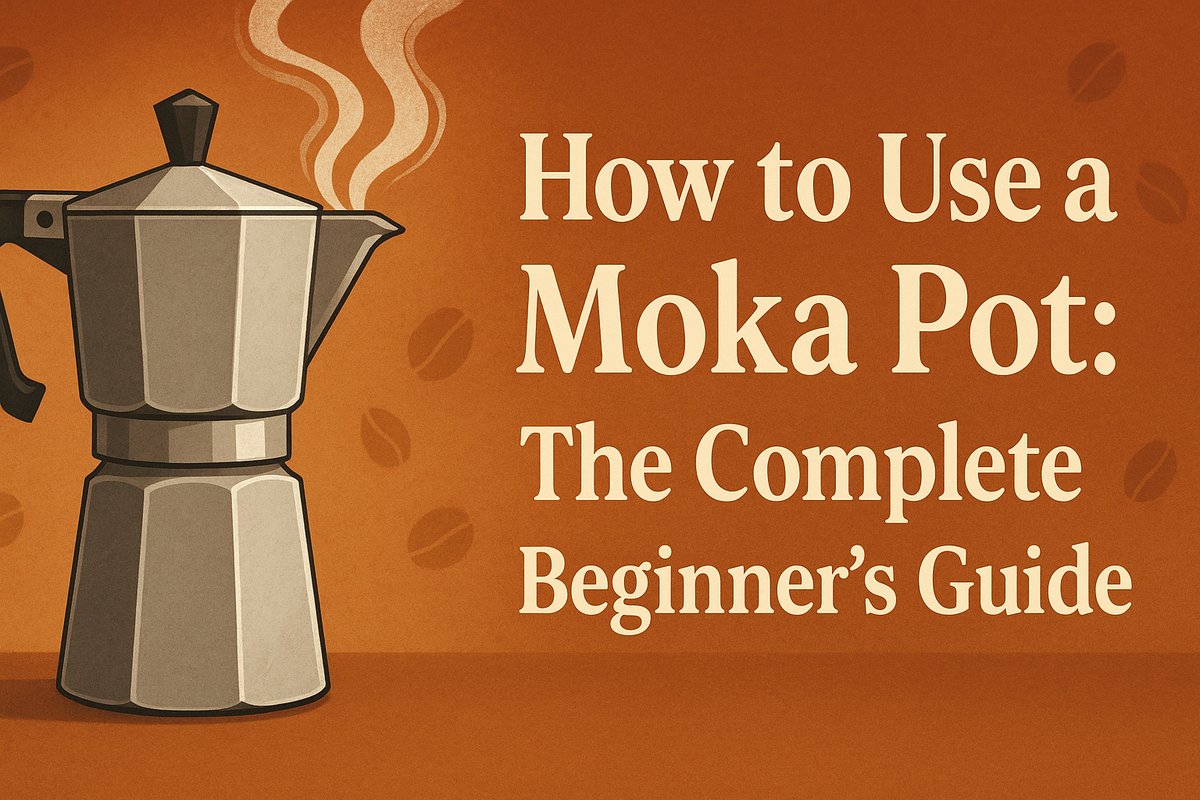How to Use a Moka Pot: The Complete Beginner's Guide
Master the art of moka pot brewing with our comprehensive step-by-step guide. From water temperature to perfect timing, learn how to make cafe-quality coffee at home.
Michael Brown
Coffee Expert & Moka Pot Specialist

The moka pot, also known as a stovetop espresso maker, is one of the most beloved brewing methods among coffee enthusiasts. Invented by Alfonso Bialetti in 1933, this iconic aluminum octagonal device has been brewing strong, flavorful coffee for generations. But despite its simple appearance, brewing perfect moka pot coffee requires technique, timing, and attention to detail.
In this comprehensive guide, we'll walk you through everything you need to know about using a moka pot, from the basic setup to advanced techniques that will help you brew coffee that rivals your favorite café.
What You'll Need
- Moka pot (any size)
- Medium-fine ground coffee
- Filtered water
- Kitchen scale
- Stovetop or heat source
- Timer
- Cold water for cooling
- Serving cups
Step-by-Step Brewing Instructions
1 Pre-heat Your Water
Start by boiling water in a separate kettle. This is a crucial step that many beginners overlook. Using pre-heated water reduces the time your moka pot spends on the stove, preventing over-extraction and bitter flavors.
Pro Tip: Heat water to about 160-170°F (70-75°C). Boiling water can cause over-extraction.
2 Grind Your Coffee
Use a medium-fine grind, similar to table salt or slightly finer than what you'd use for pour-over. The grind should be fine enough to create resistance but not so fine that it clogs the filter.
Coffee-to-water ratio: Use approximately 1:10 ratio. For a 3-cup moka pot, use about 18g of coffee.
3 Fill the Bottom Chamber
Fill the bottom chamber with your pre-heated water up to the safety valve. Never exceed this level, as it's crucial for the proper pressure build-up and safety of the brewing process.
Safety Note: The safety valve must never be submerged in water.
4 Add Coffee to the Filter Basket
Fill the filter basket with your ground coffee, creating a small mound. Level it off with your finger, but don't tamp or press down. The coffee should sit level with the top of the basket.
Ensure no coffee grounds are on the rim of the basket, as this can prevent a proper seal.
5 Assemble the Moka Pot
Place the filter basket into the bottom chamber, then screw on the top chamber firmly but not too tight. You should be able to unscrew it easily after brewing.
Tip: Use a towel to hold the bottom chamber if it's still hot from the pre-heated water.
6 Heat on the Stove
Place the moka pot on the stove over medium-low heat. Keep the lid open so you can monitor the brewing process. The key is gentle, consistent heat—too high and you'll get bitter, over-extracted coffee.
The brewing process typically takes 4-5 minutes. You'll hear a gurgling sound when it's ready.
7 Watch for the Coffee Flow
When the water begins to boil, steam pressure will push the water up through the coffee grounds. You'll see coffee start to flow into the upper chamber—first dark, then gradually lighter in color.
When you hear a gurgling, sputtering sound, the brewing is complete. Remove from heat immediately.
8 Cool and Serve
Immediately run the bottom of the moka pot under cold water to stop the brewing process. This prevents over-extraction and ensures your coffee tastes its best.
Stir the coffee in the upper chamber before serving, as the first coffee out is stronger than the last.
Common Mistakes to Avoid
Using Cold Water
Starting with cold water keeps the moka pot on heat longer, leading to over-extraction and bitter coffee.
Tamping the Coffee
Unlike espresso, moka pot coffee should never be tamped. This can cause dangerous pressure buildup.
Using High Heat
High heat causes rapid extraction and bitter flavors. Always use medium-low heat for best results.
Leaving on Heat Too Long
Remove from heat as soon as you hear gurgling. Continuing to heat will burn the coffee.
Troubleshooting Your Brew
Coffee tastes bitter or over-extracted?
Try using a coarser grind, lower heat, or pre-heated water. Also ensure you're removing from heat promptly.
Coffee tastes weak or watery?
Use a finer grind, more coffee, or check that your moka pot is properly sealed.
No coffee coming out?
Your grind might be too fine, clogging the filter. Try a slightly coarser grind.
Coffee sputtering violently?
Heat is too high. Reduce temperature and use pre-heated water next time.
The Perfect Cup Awaits
Mastering the moka pot takes practice, but once you get the technique down, you'll be rewarded with rich, full-bodied coffee that's perfect for enjoying straight or as a base for milk-based drinks like cappuccinos and lattes.
Remember, every moka pot behaves slightly differently, so don't be discouraged if your first few attempts aren't perfect. Keep practicing with these techniques, and soon you'll be brewing café-quality coffee at home.